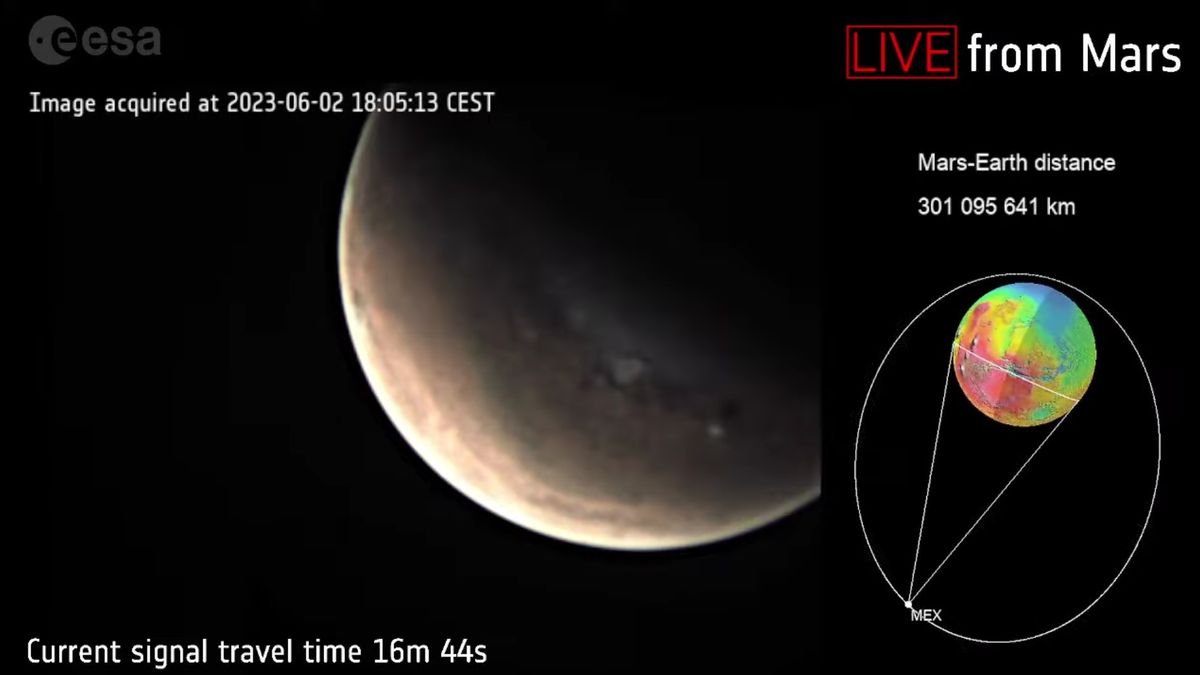JAKARTA - For the first time in history, the European Space Agency (ESA) has shown how Mars looks through live broadcasts.
The event was broadcast on ESA's official YouTube and Twitter, Friday, June 2, with the hashtag #MarsLIVE, to celebrate the 20th anniversary of the launch of ESA's Mars Express orbiter, and show the Red Planet in a different way.
Mars Express itself is a mission to take a three-dimensional image of the planet's surface, in order to see it in more detail.
The live broadcast image was taken by High Resolution Stereo Camera (HRSC) at Mars Express orbiters in color and 3D.
The location is to the east of the Hellas basin at 41 degrees South and 101 degrees East. The area is 100 km in diameter, with a resolution of 12 m per pixel, and shows the channel (Reull Vallis) ever formed by flowing water. Nature is seen in the vertical, North view above.
"Usually, we look at pictures from Mars and know that it was taken a few days earlier. I'm happy to see Mars as it is now, as close as we can to Mars 'now' as we can get!," said Mars Express Operations Manager James live in a statement.
Indeed, so far people on Earth often see Mars through images obtained by NASA's rover robots, ESA and other countries. However, never watched it live.
The Mars Express HRSC camera was originally designed to monitor the separation of the Beagle 2 lander from the MIX spacecraft 20 years ago.
After that it was completed, and it was reported back, turned off until 2007 for science and socialization activities.
The researchers spent the last few months developing a tool that would allow higher-quality images to be scientifically processed for live broadcast, for an entire hour like now.
It is known, usually Mars data and observations are taken when the Mars Express is not in direct contact with Earth, so the image is saved until it can be sent back.
There are two reasons why this happened, first, the spacecraft is on the other side of the Sun or Mars, second, the antenna is heading in a direction far from Earth when observing.
So, messages sent via space can take between three and 22 minutes.
اقرأ أيضا:
However, in a live broadcast conducted by ESA, they expect it will take about 17 minutes to deliver data from Mars to Earth. Then, one more minute to pass through cables and servers on land in order to start live streaming.
"No star is visible in the image background because Mars is bright enough. (But) if you are very close to it, it's even brighter," said ESA Project Scientist Colin Wilson explaining the images on the live broadcast, as quoted by CNN International, Saturday, June 3.
Wilson added that the image obscures the stars around it at a special angle taken by the Mars Express.
"But, if you're on the Mars Express spacecraft, you'll be able to see most of the cosmos. And that's actually important for Mars Express navigation," explained Wilson.
Mars Express uses onboard maps and imaging of stars to direct itself in space, as humans have navigated oceans for centuries.
Images of the Mars Express spacecraft are taken once every 48 seconds. However, not without obstacles. ESA admits many brief disturbances occur when earth stations on Earth cannot collect data chipped from the spacecraft due to bad weather.
From the images seen, Mars does not appear to be fully red as imaged by rover robots.
Instead, the planet is seen showing a blackish brown color and a reflection of bright light. Most likely, this could have happened because of a resolution from the HRSC camera or a bad signal.
The event lasted about an hour, from an image sent by Mars Express before the spacecraft moved too far from Mars to continue capturing the planet's data. Watch the video here.
The English, Chinese, Japanese, Arabic, and French versions are automatically generated by the AI. So there may still be inaccuracies in translating, please always see Indonesian as our main language. (system supported by DigitalSiber.id)














